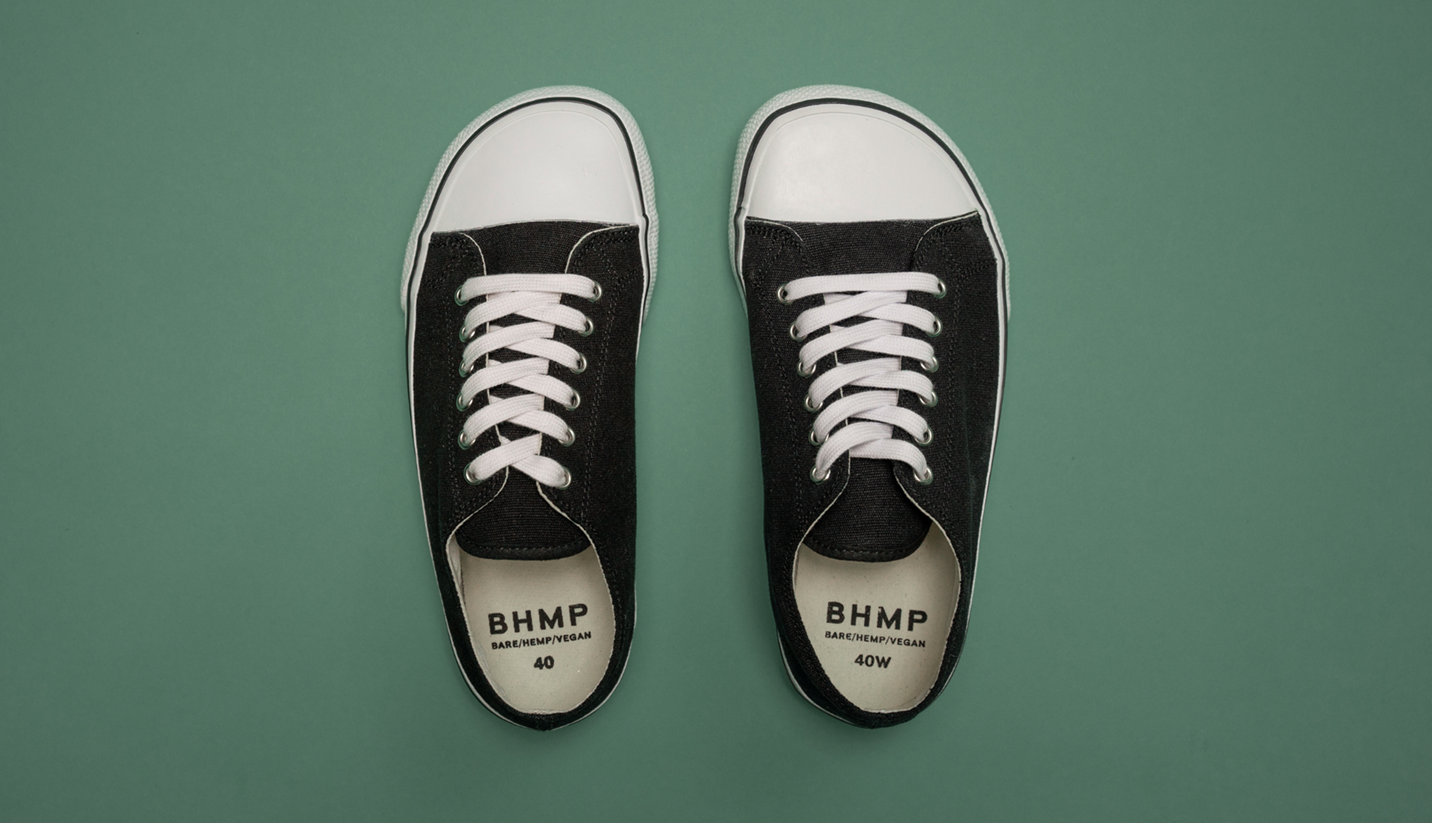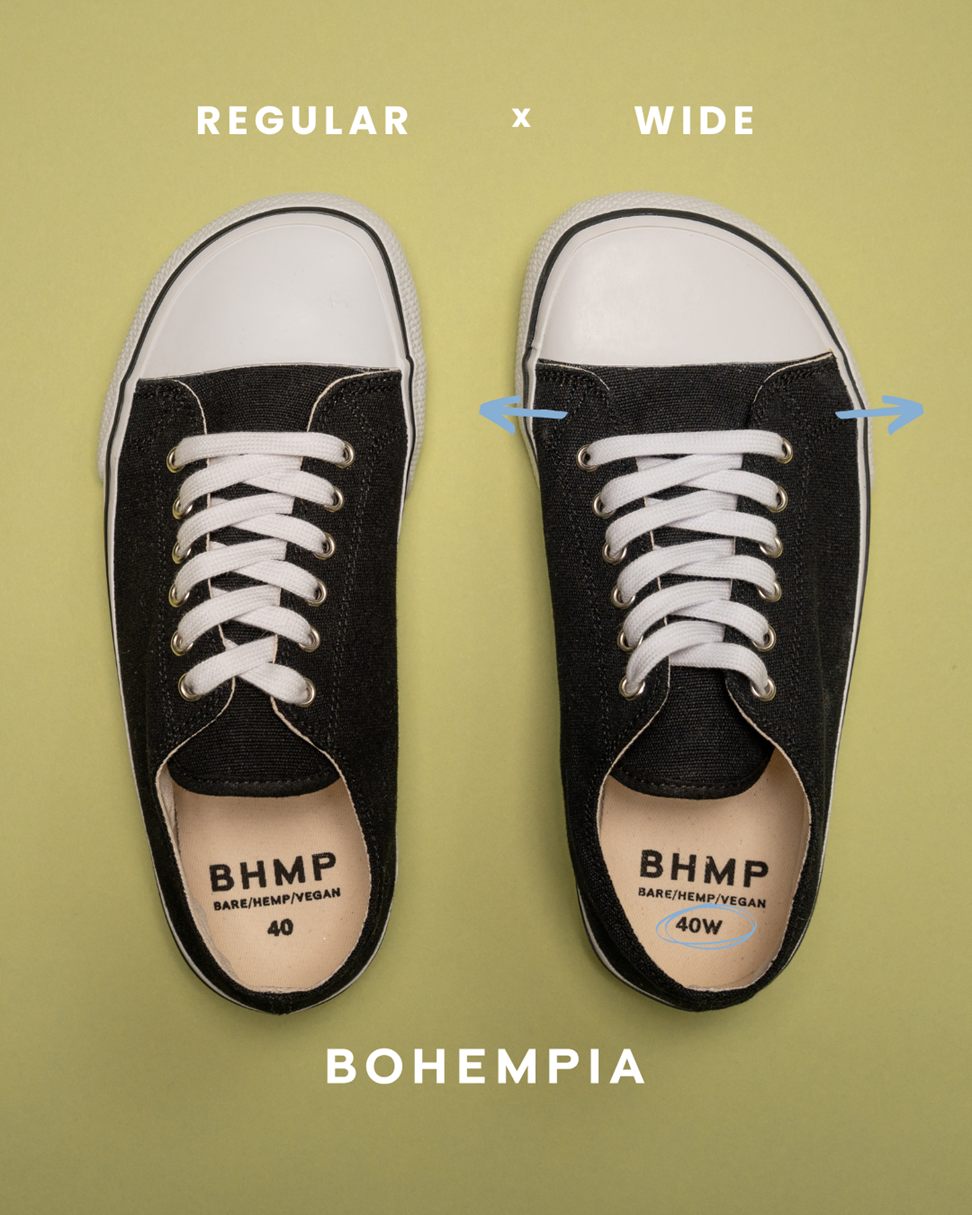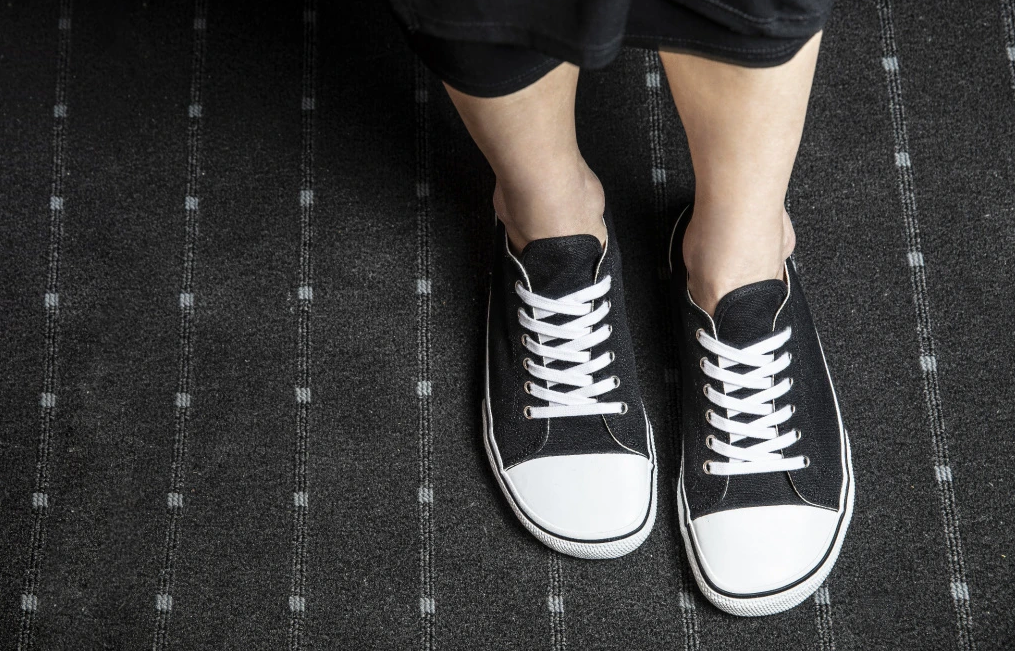Do regular barefoot shoes feel too tight around your toes? You're not alone. That’s why at Bohempia, we offer extra wide barefoot shoes – designed to give your toes the freedom they need and bring comfort to truly wide feet. Our W-width models are among the widest barefoot shoes on the market and are loved by many in the barefoot community. In this article, we’ll show you why barefoot shoes for wide feet make such a difference and how to choose the perfect width and size for your feet.
A lot of people fall in love with barefoot shoes at first step. But not everyone finds the perfect pair right away. If your feet are naturally wider, the search can be a bit trickier — but far from impossible.
That’s where our wide fit barefoot sneakers come in. Alongside our standard width models (labeled as Regular), we offer a W-width — extra wide barefoot shoes that give you more space in the toe box and across the instep. No compromises, no break-in time, and no squeezing.
Regular width – best for narrow to average feet, great for barefoot beginners.
Wide fit (e.g. 38W) – for experienced barefoot lovers and anyone with naturally wide feet.
Who are wide barefoot shoes made for?
We created our wide barefoot shoes (marked “W”) for anyone with wider feet — whether it’s around the toes, the instep, or throughout the foot. But they also work beautifully for those already used to barefoot comfort who want to give their feet even more space.
When should you consider wide fit barefoot shoes?
-
If regular barefoot shoes feel “just okay” width-wise.
-
If you find yourself slightly curling your toes while walking.
-
If you feel pressure in the toe box instead of the freedom you expect.
What changes when you wear barefoot shoes for wide feet?
Once you give your feet room to move naturally, it changes everything — your posture, balance, and overall comfort. Your body no longer has to adapt to the shoe. Instead, the shoe adapts to the shape of your foot.
For many, switching to extra wide barefoot shoes is a true game-changer — the moment they realize their discomfort wasn’t about "getting used to barefoot shoes" but simply about needing more space.
How to choose the right width and size?
Knowing the length and width of your feet is key. On our e-shop, you’ll find a handy size guide to help you decide which fit works best for you. Well-fitting barefoot shoes don’t just feel better — they also last longer.
.svg)







.png)
.png)
.png)
.png)



